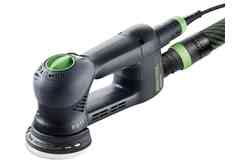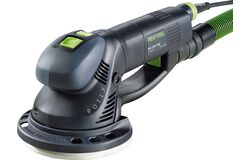Staircase renovation made easy
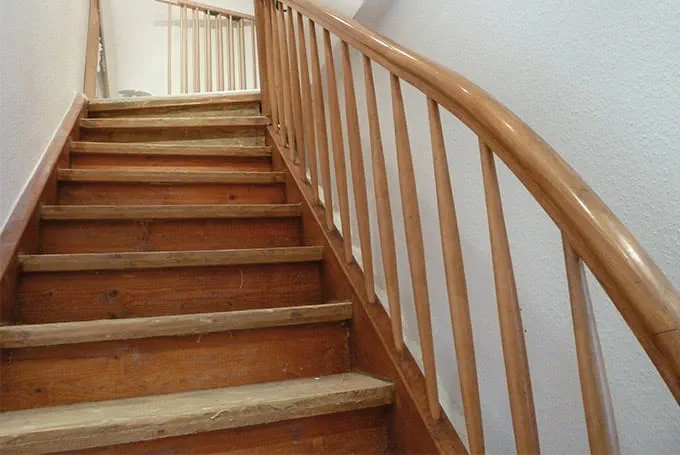
Description
The following guide describes how to renovate an old wooden staircase. The ROTEX geared eccentric sander can be used to sand the staircase both coarsely and finely using a single tool; it can also be used to prepare "problem areas" such as corners for subsequent coating. This makes renovation quick and easy and creates stairs that look as good as new.
Tools/accessories
Alternative tools
Procedure
-
For coarse sanding on surfaces, screw the hard (blue) sanding pad onto the ROTEX geared eccentric sander. To do so, set the machine to "Pad change" mode.
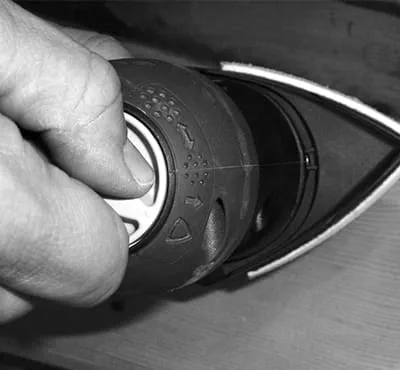
-
Use the rotary switch to set the machine to coarse sanding.
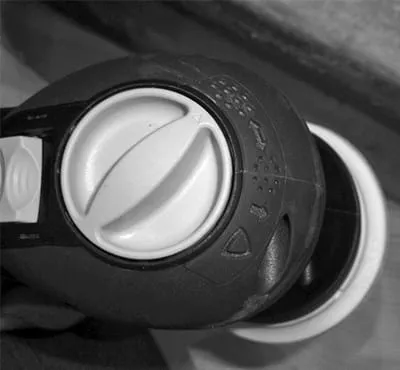
-
Attach the 27 mm diameter extractor hose to the ROTEX.
Set the ROTEX speed adjustment system to level 6.
If the abrasive gets clogged quickly, reduce the speed in order to prolong the abrasive's service life.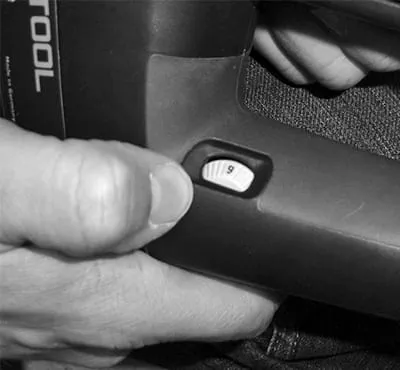
-
Sand surfaces so they are smooth and flat using the Granat P40 – P80 abrasive. The Granat special abrasive is particularly suited to removing old paint and has been developed specifically for Festool VOC paint material.
Alternatively, when sanding and renovating larger areas, the ROTEX TO 150 FEQ geared eccentric sander can be used.
-
To renovate the corners of a staircase, fit the Delta sanding pad on the machine.
Set the machine to "Pad change" mode.
Remove the sanding pad and fit the triangle pad. The two triangular symbols on the sanding pad and on the lower area of the machine must be aligned in order to screw on the sanding pad.
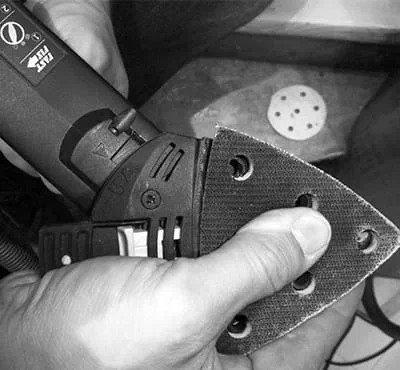
-
Sand corners using Granat P40-P100 (select the right grit size for the surface design in each case) for high-quality renovation work on wooden stairs.

-
For fine sanding on surfaces, screw the soft (black) sanding pad onto the ROTEX tool.
Use the rotary switch to set the machine to fine sanding.
Attach the 27 mm diameter extractor hose to the ROTEX.
Set the ROTEX speed adjustment system to level 6; readjust if necessary.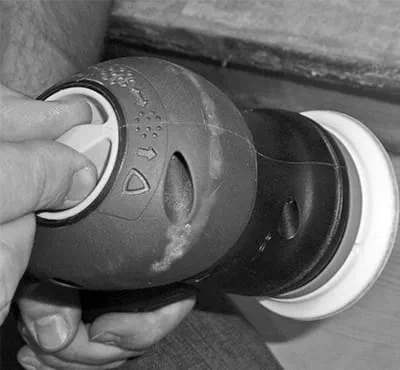
-
Subsequent fine sanding on surfaces using the Rubin P100 – P150 abrasive.
Carry out the same process in the corners as for the coarse sanding on the steps, using Rubin 2 P100 – P180 abrasive (select the right grit size for the surface design in each case).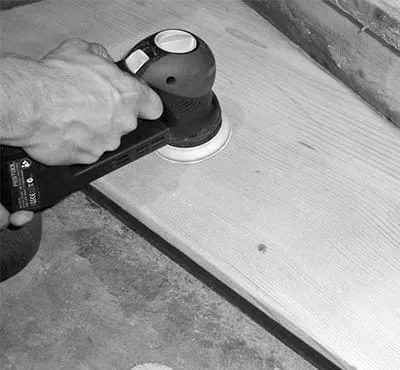
-
Additional staircase renovation tips:
An interface pad can be used to sand curves for banisters or wellholes, as well as the front sides of the steps. The ultra-soft foam material gets right into the contours that are going to be machined, allowing craftspeople to renovate an old staircase easily.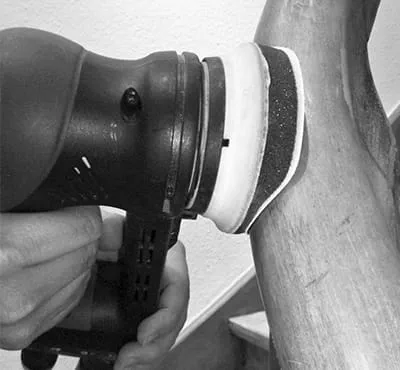
-
The ROTEX protector provides additional assistance when renovating steps. Using the protector ensures that adjacent areas will not be damaged by the sanding pad or the abrasive.
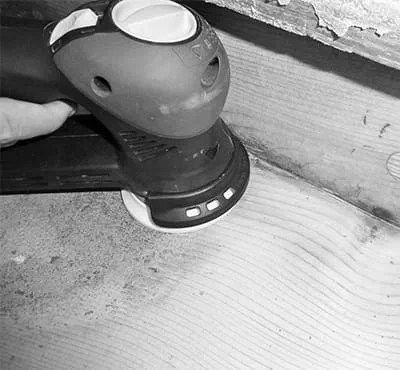
-
The RO 90 DX triangle pad stands up to use under extreme load, caused by either temperature or wear. This makes it possible to rotate the StickFix pad by120° in order to use every corner of the adhesive layer. The StickFix pad is fitted and removed using the button.
Once the sanding work on the staircase is complete, a single-component sealing paint can be applied, for instance, by either rolling or brushing.
If the surface of the staircase cannot be finished using a transparent coating for visual or technical reasons (e.g. deep splinters, visible screw holes, severely damaged/filled areas), an opaque coating can be used to renovate the wooden staircase. Opaque paint can be used to add additional colourful touches to the staircase.
-
Our illustrated guides and work results are documented working steps that we have performed in practice. They are individual examples and do not guarantee or promise that users will obtain the same results. The results will depend on the user's experience and skill, as well as the material being used. Illustrated guides do not replace any Festool operating manuals and/or safety instructions. Liability for ensuring that the information, instructions and applications are free from content defects and defects of title, in particular with regard to the absence of defects, correctness, freedom from third party intellectual property rights and copyrights, completeness and fitness for purpose, is excluded. Claims for damages made by the user, regardless of their legal basis, are excluded. These liability exclusions are not applicable if the damage was intentional or caused by gross negligence, or in cases of statutory liability.
We cannot accept liability for damage resulting from defects.↑




































